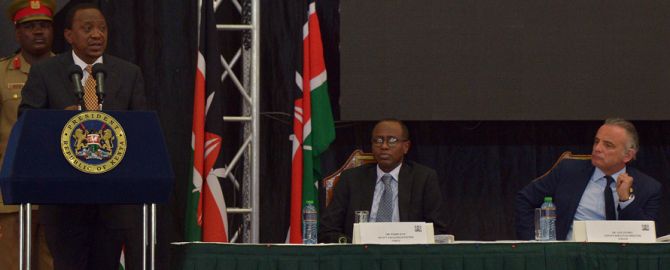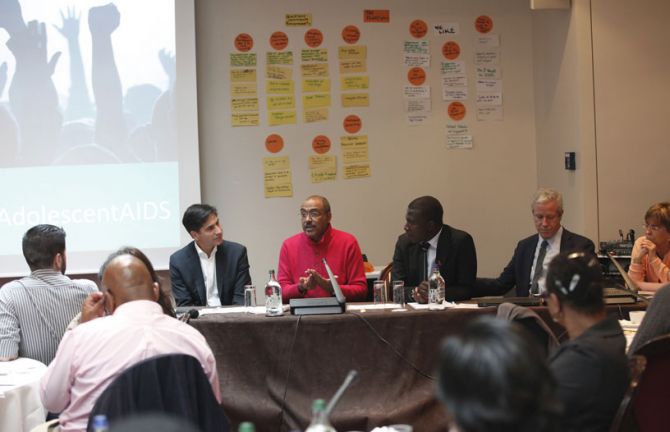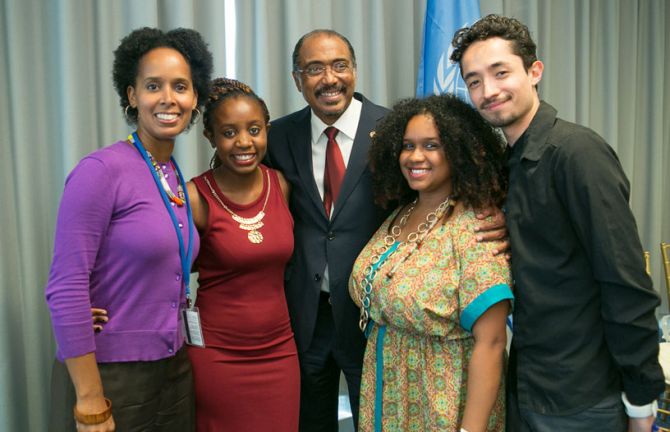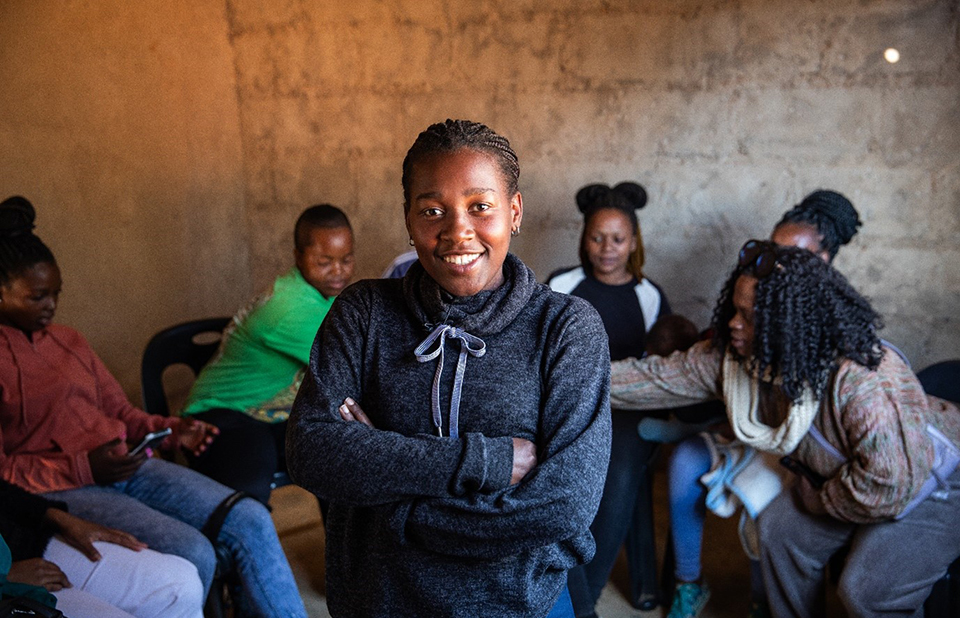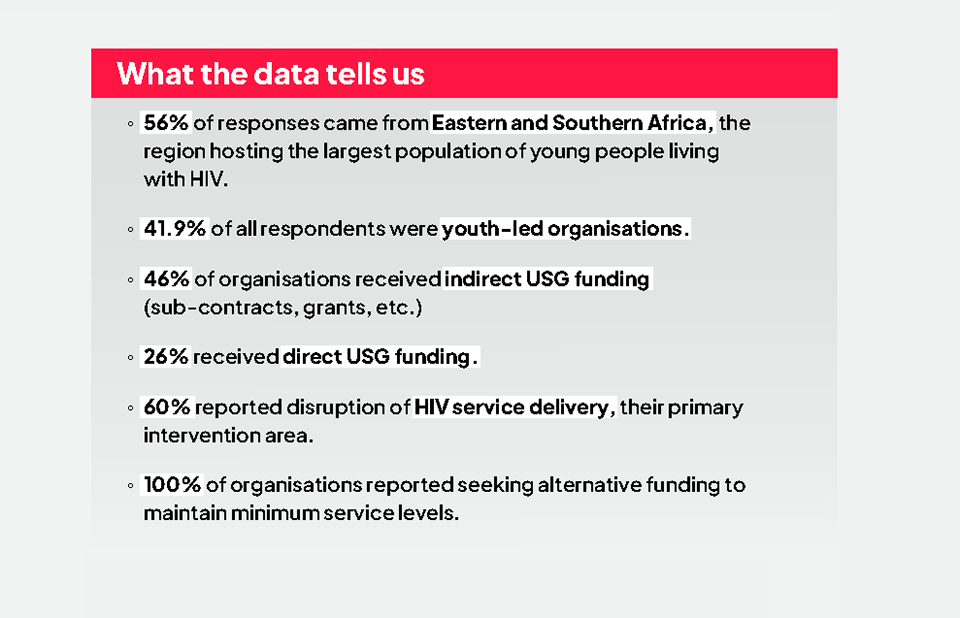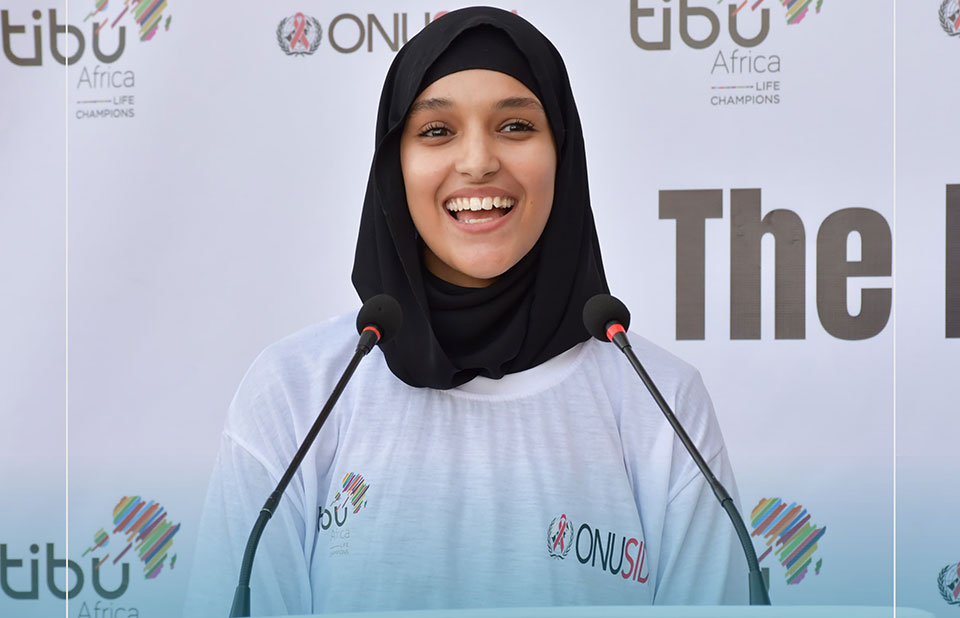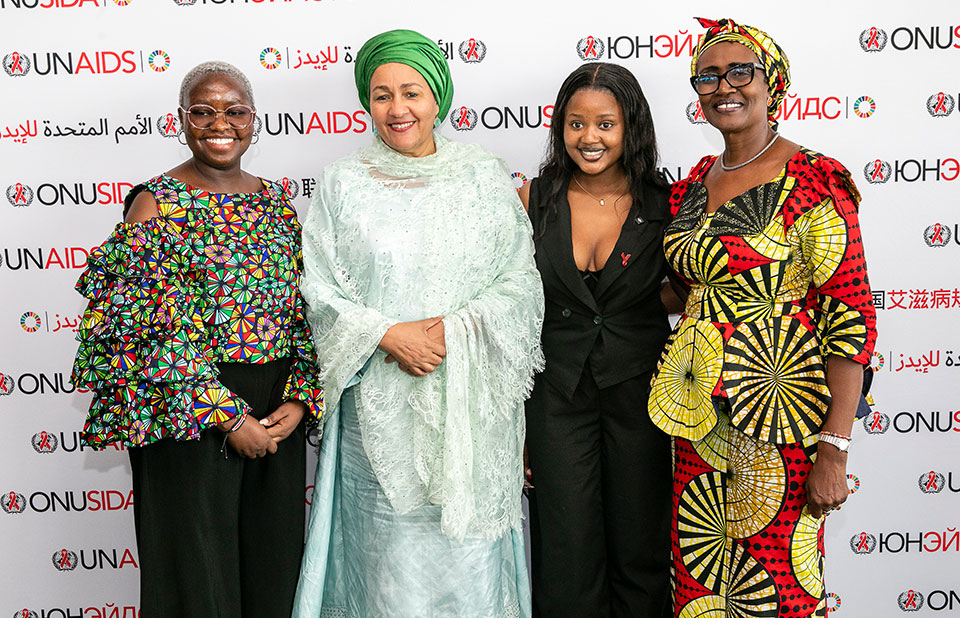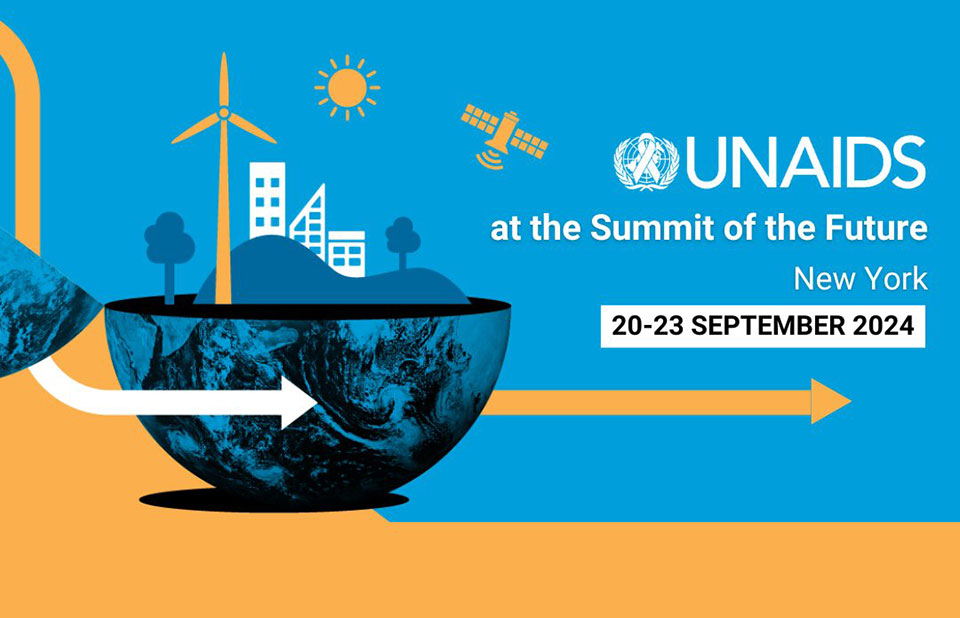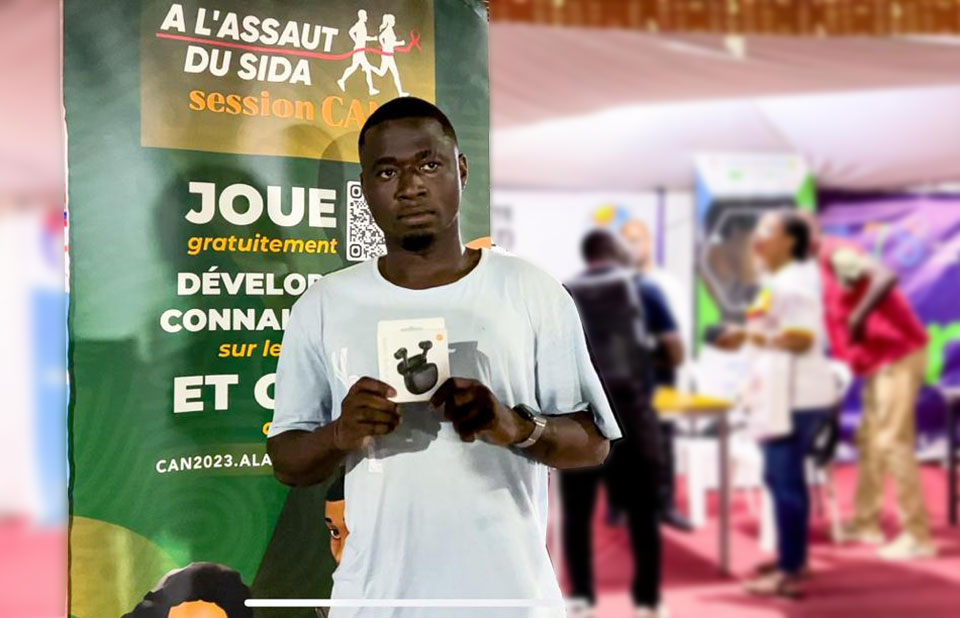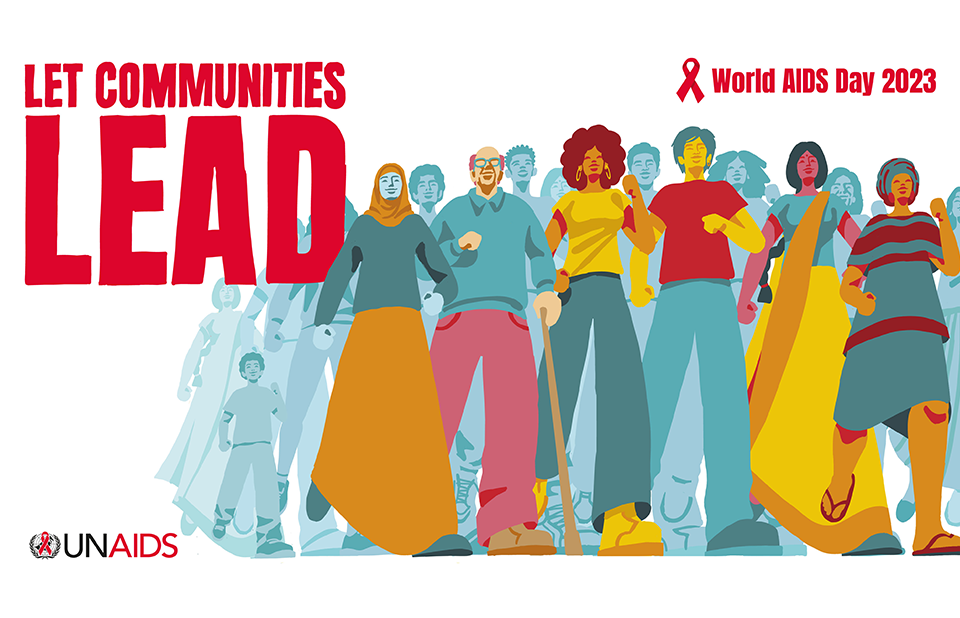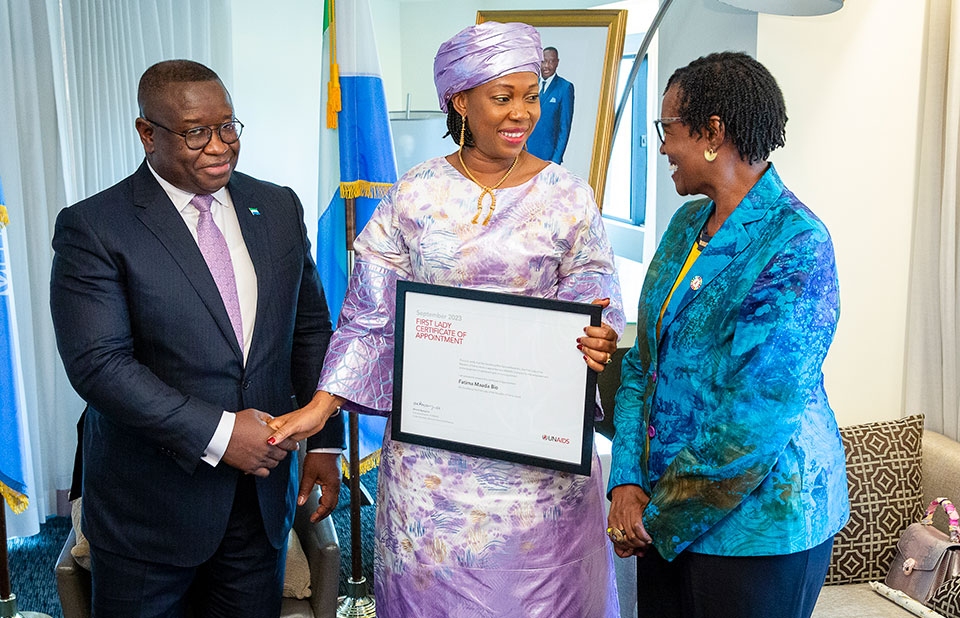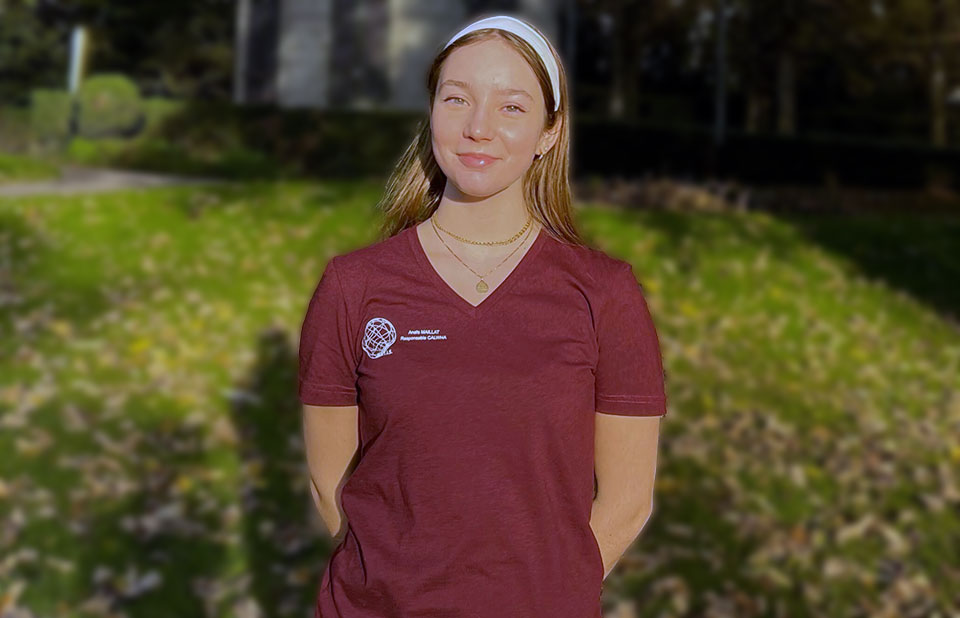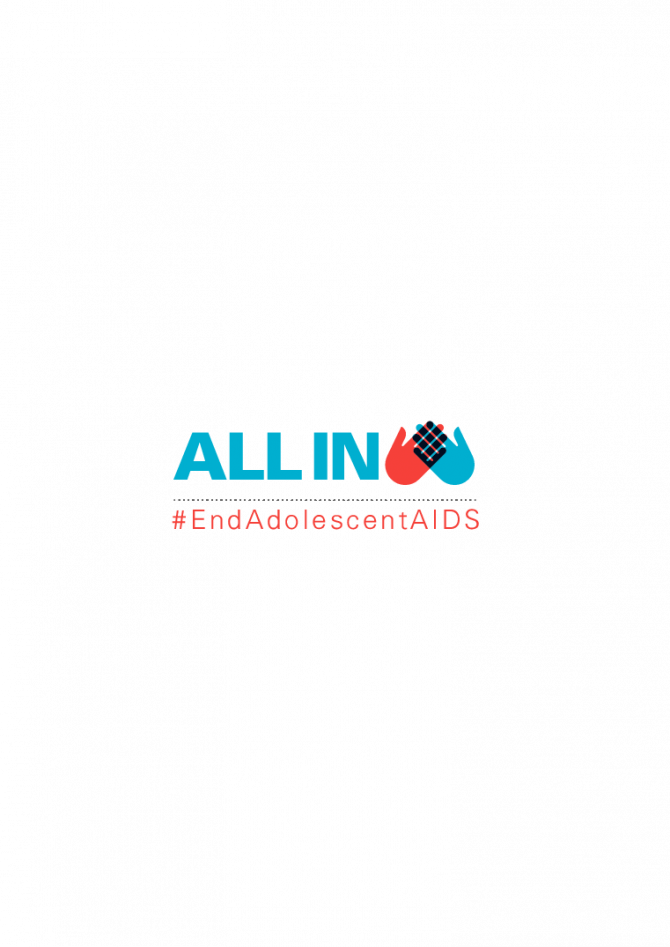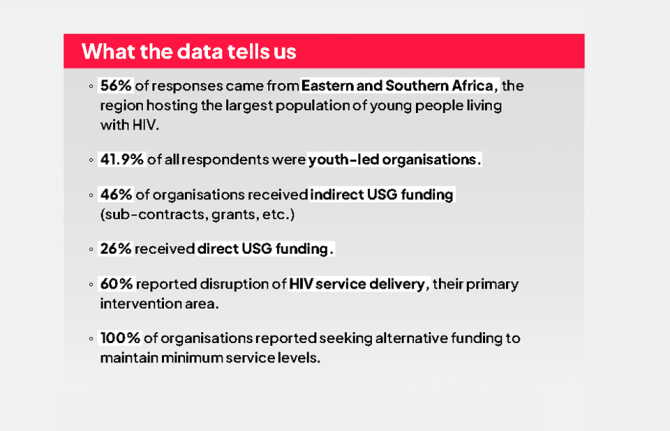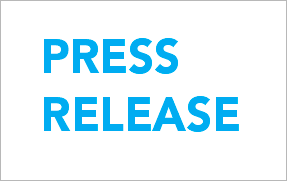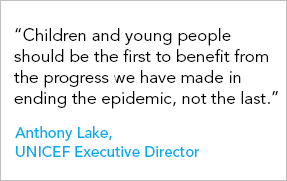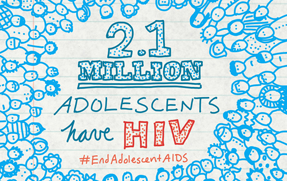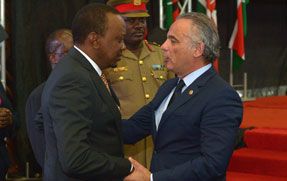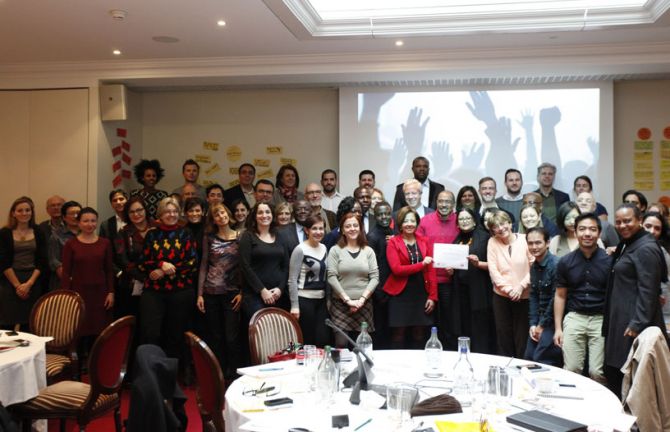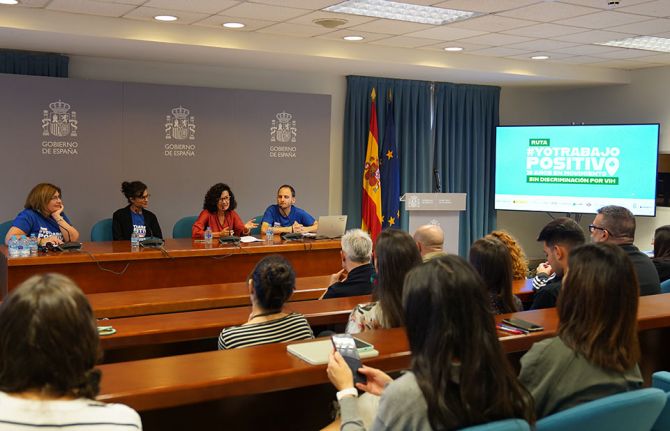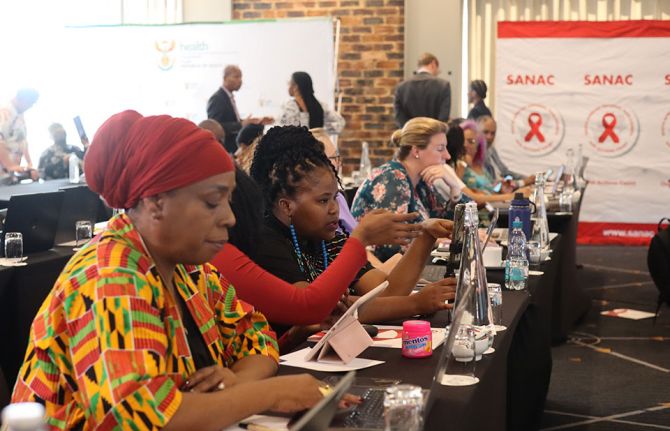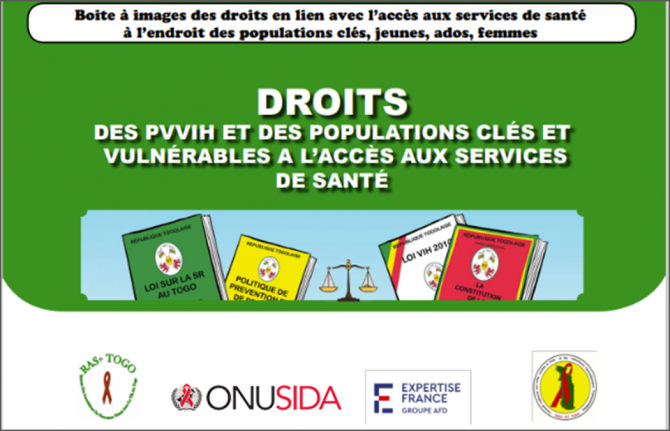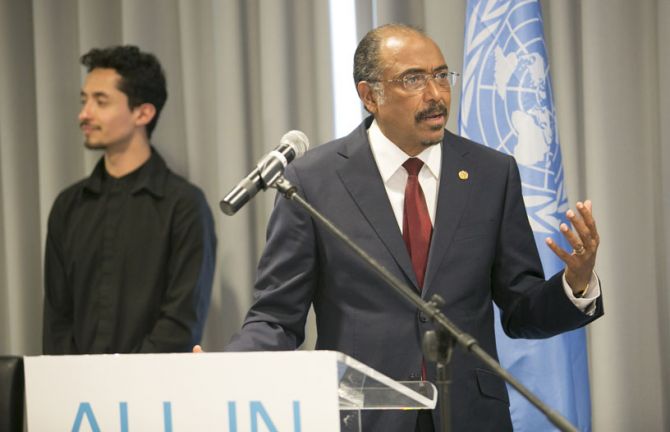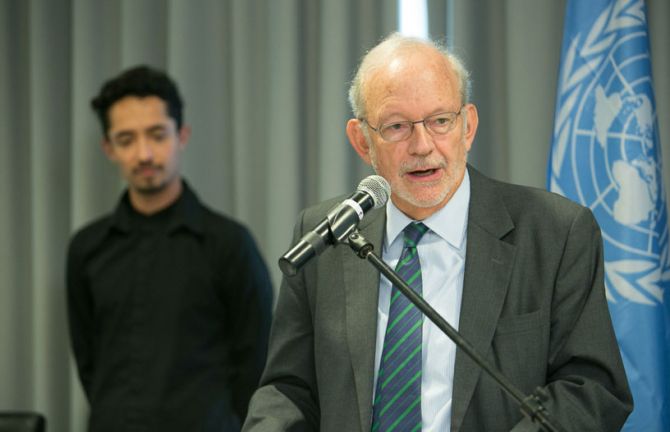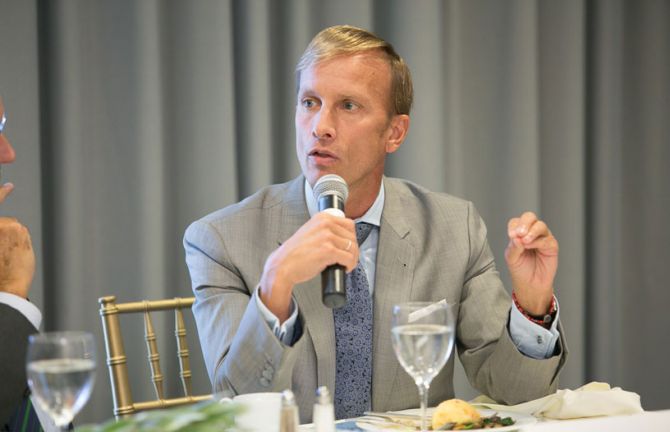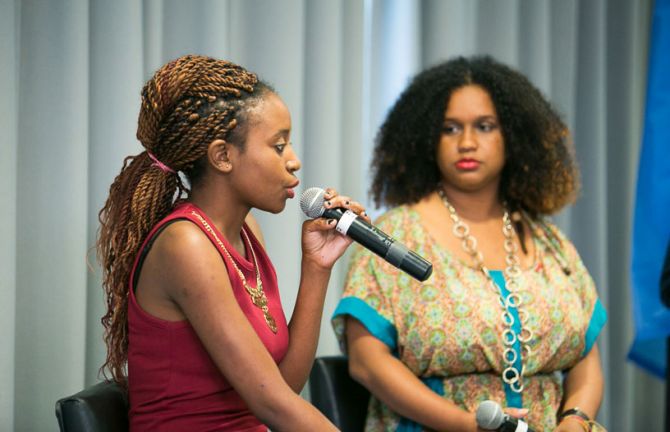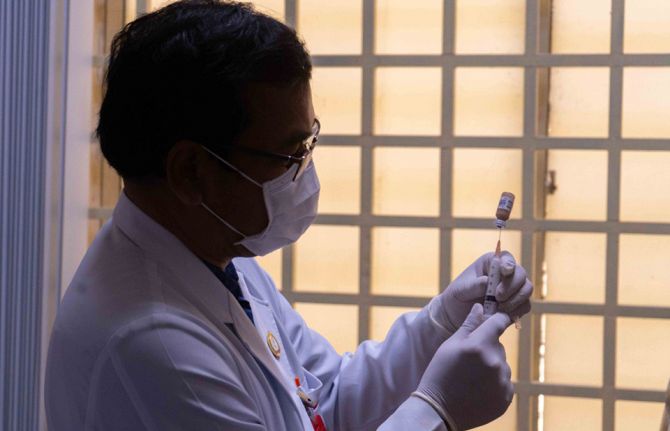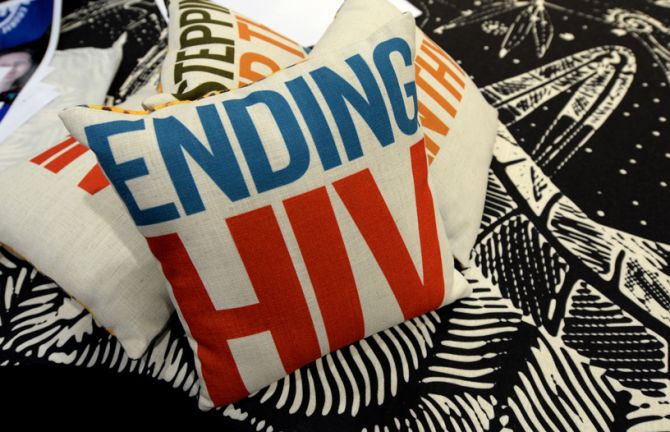UNAIDS, UNICEF, UNFPA, WHO, PEPFAR, the Global Fund to Fight AIDS, Tuberculosis and Malaria, the MTV...
UNAIDS, UNICEF, UNFPA, WHO, PEPFAR, the Global Fund to Fight AIDS, Tuberculosis and Malaria, the MTV Staying Alive Foundation and youth movements represented by PACT and Y+ join President Uhuru Kenyatta to launch All In, a new platform for action against the adolescent AIDS epidemic.
NAIROBI, 17 February 2015—While major advances have been made in almost every area of the response to HIV, progress for adolescents is falling behind, said leaders in the global response to end the AIDS epidemic.
AIDS has become the leading cause of death for adolescents in Africa and the second leading cause of death among adolescents globally. Just one in four children and adolescents under the age of 15 have access to life-saving antiretroviral treatment. Deaths are declining in all age groups, except among 10–19 year olds.
New HIV infections among adolescents are not declining as quickly as among other age groups. Adolescent girls, particularly in sub-Saharan Africa, are most affected. In South Africa in 2013, more than 860 girls became infected with HIV every week, compared to 170 boys.
To address this inequity, UNAIDS, UNICEF and partners have launched All In, a new platform for action to drive better results for adolescents by encouraging strategic changes in policy and engaging more young people in the effort.
Leaders from around the world met today in Nairobi, Kenya, where President Uhuru Kenyatta launched the new platform, which will help address one of the most pressing gaps in the AIDS response.
“By including adolescents in decision-making processes that have a direct effect on their lives, this initiative will be a catalyst for change,” said President Kenyatta. “Kenya is proud to support this new initiative.”
All In focuses on four key action areas: engaging, mobilizing and empowering adolescents as leaders and actors of social change; improving data collection to better inform programming; encouraging innovative approaches to reach adolescents with essential HIV services adapted to their needs; and placing adolescent HIV firmly on political agendas to spur concrete action and mobilize resources.
“AIDS is the leading cause of death among adolescents in Africa. Globally, two thirds of all new infections among adolescents were among adolescent girls. This is a moral injustice,” said Michel Sidibé, Executive Director of UNAIDS. “I am calling on young people to lead the All In movement, alongside the United Nations, public and private partners, and countries themselves, to end the adolescent AIDS epidemic.”
Most of the 2.1 million adolescents living with HIV in 2013 became infected at least 10 years ago, when their mothers were pregnant, during delivery or in the first months of life—at a time when antiretroviral medicines that can greatly reduce the possibility of HIV transmission were not available. Many were never diagnosed, lost to follow-up or fell out of treatment and care programmes.
“Children and young people should be the first to benefit from the progress we have made in ending the epidemic, not the last,” said UNICEF Executive Director Anthony Lake. “We need to reach the adolescents we are missing and engage all young people in the effort to end adolescent AIDS. In fact, we cannot achieve the goal of an AIDS-free generation without them.”
More than 200 young advocates and leaders from adolescent and youth movements were present at the launch of All In.
“We can’t talk about ending AIDS or getting to zero without including adolescents in every decision-making platform,” said Consolata Opiyo, from Y+, the Global Network of Young People Living with HIV. “Adolescents are the group most affected by HIV and they are tomorrow’s leaders.”
“We can’t say that we are on the right track to end AIDS if it continues being the main cause of death for adolescents in Africa,” said Pablo Aguilera, Executive Director of the HIV Young Leaders Fund and Co-Chair of the PACT. “We must ensure that no adolescent is left behind.”
Since the HIV status of many children went undiagnosed 10 to 15 years ago, they are now entering adolescence unaware that they are living with the virus, with limited opportunities for HIV detection and referral to treatment programmes.
Deborah Birx, United States Global AIDS Coordinator and United States Special Representative for Global Health Diplomacy, said, “The future of sub-Saharan Africa rests in the health and well-being of the youth. We’re committed to working with partner countries and others to close the health gap that leaves adolescent girls and young women particularly vulnerable to HIV infection.”
“I warmly welcome this launch of the All In initiative as an innovative way to tackle a stubborn stronghold of HIV infection,” said Margaret Chan, Director-General of the World Health Organization.
The All In platform for action aims to increase the meaningful participation of adolescents in decision-making processes and strengthen youth-led social movements. The campaign will also identify opportunities to link adolescent HIV strategies into existing adolescent health and development programmes. In addition, All In will engage national leaders to coordinate, support and lead assessments of existing programmes and expand partnerships for innovation between the public and private sectors.
“We need to meet adolescents where they are and address the challenges they face,” said Babatunde Osotimehin, Executive Director of UNFPA, the United Nations Population Fund. “UNFPA is All In to protect their human rights and sexual and reproductive health, and prevent and treat HIV.”
All In will aim to reach adolescents with HIV services designed for their specific needs and realities and to fast-track progress among an age group critical to advancing global efforts to end the AIDS epidemic by 2030.
“We can expand opportunity by getting everyone to recognize the seriousness of HIV, and how to end it,” said Mark Dybul, Executive Director of the Global Fund to Fight AIDS, Tuberculosis and Malaria.
The next five years are crucial. UNAIDS has set new Fast-Track Targets to be achieved by 2020 for adolescents that include reducing new HIV infections by at least 75%, reducing AIDS-related deaths by 65% and achieving zero discrimination. Achieving the targets would put the world on track towards ending adolescent AIDS by 2030 and ending the global AIDS epidemic as a public health threat.
All In to #EndAdolescentAIDS
All In to #EndAdolescentAIDS is a platform for action and collaboration to inspire a social movement to drive better results for adolescents through critical changes in programmes and policy. It aims to unite actors across sectors to accelerate reductions in AIDS-related deaths and new HIV infections among adolescents by 2020, towards ending the AIDS epidemic for all by 2030. It is convened by a leadership group that includes UNAIDS, UNICEF, UNFPA, WHO and PEPFAR, as well as the Global Fund to Fight AIDS, Tuberculosis and Malaria, the MTV Staying Alive Foundation and the adolescent and youth movement represented by the HIV Young Leaders Fund on behalf of the PACT and Y+.
UNICEF
UNICEF promotes the rights and wellbeing of every child, in everything we do. Together with our partners, we work in 190 countries and territories to translate that commitment into practical action, focusing special effort on reaching the most vulnerable and excluded children, to the benefit of all children, everywhere. For more information about UNICEF and its work visit: www.unicef.org. Follow UNICEF on Twitter and Facebook.
UNAIDS
The Joint United Nations Programme on HIV/AIDS (UNAIDS) leads and inspires the world to achieve its shared vision of zero new HIV infections, zero discrimination and zero AIDS-related deaths. UNAIDS unites the efforts of 11 UN organizations—UNHCR, UNICEF, WFP, UNDP, UNFPA, UNODC, UN Women, ILO, UNESCO, WHO and the World Bank—and works closely with global and national partners towards ending the AIDS epidemic by 2030. Learn more at unaids.org and connect with us on Facebook and Twitter.
